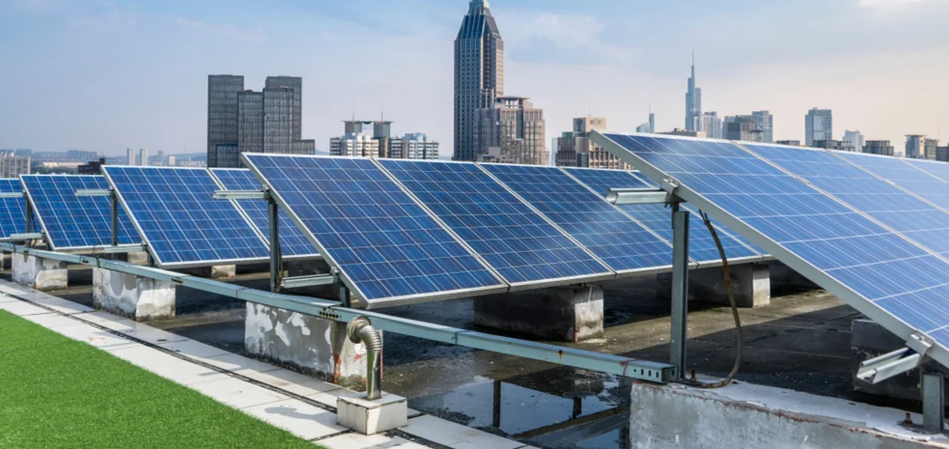The list of the Top 5 leading East Coast States in solar power in the USA is an interesting one given that solar has been growing exponentially in the last 2 decades in the US. In the year 2000, there were only around 100 MW of solar installations. However, the Solar Energy Industries Association (SEIA) has already reported over 85,000 MW by mid-2020, an is estimated to reach 100,000 MW mark by early 2021.
There have been several factors that contributed to the tremendous success of solar power in the US. One of the biggest success factors being the technology becoming more and more affordable each year coupled with the rising prices of electricity. In simple terms, the upfront cost per kW is reduced, while the total savings per solar panel increases. In addition to this, governments or utility companies are now offering incentives depending on the location of the project.
Speaking of incentives, the Investment Tax Credit (ITC) has greatly contributed to the solar growth in US. The incentives can be availed by businesses as well as homes. The federal tax credit for solar installations was 30% by the end of 2019. However, the federal tax credit was reduced to 26% in 2020 and will further drop to 22% in 2021. The ITC will likely be only 10% and available for businesses only from 2022.
In US, some states are much ahead in solar adoption as compared to others, while some are estimated to become leaders in the coming years. This article intends to breakdown the Top 5 leading East Coast States in solar power in US considering factors like incentive programs and electricity prices.
- New York – 100% Renewable Energy by 2050
New York offers excellent incentives for solar installations even though it’s not a very sunlight rich state. Considering the Federal Tax Credit, the State Tax Credit and the NY-Sun Rebate, solar installations can be around 50% cheaper in New York.
Highlights for Solar Power in NY
Renewable Standard: 100% renewable energy target, with a 6,000 MW solar power target for 2025.
Attractive incentives for low-income houses by NY-Sun Rebate program.
25% state tax credit of up to $5000.
High electricity prices.
Exemption from property and sales taxes.
Solar panels or green roofs are mandatory for many properties.
For a given capacity, the number of kWh produces will be less compared to a sunny state like California or Colorado. However, since the electricity cost is much higher in NY state, the dollar value of solar generation is very high.
2. New Jersey – 50% Renewable Energy by 2030
New Jersey is also on the Top 5 leading East Coast States in solar power. It offers a combination of incentives and favourable policies for solar power. Solar power system owners can make additional income by selling the excess SRECs (Solar Renewable Energy Certificate). As of 2020, each SREC sells around $230 which is equivalent to 23 cents/kWh. The electricity prices in NJ are currently 16 cents/kWh, which means the SREC sales will be higher than the power bill savings.
Highlights for Solar Power in NJ
Renewable Standard: 50% renewable energy target by 2030, with a 5.1% solar power target by 2021.
Earn a SREC for every 1000 kWh.
NJ Clean Energy Program rebate for new homes.
Favourable net metering laws.
Above-average electricity prices.
Exemption from property and sales taxes.
3. Massachusetts
As of 2020, Massachusetts is arguably the best state for solar power. Electricity costs are above 20 cents/kWh and you get a SMART incentive of around 10 cents/kWh. This means 1 kWh generated from solar panels has a value of over 30 cents.
Highlights for Solar Power in MA
Renewable Standard: 50% renewable energy target for 2045, with a target of 3,200 MW for solar power.
10 cents/kWh by SMART incentive programs.
15% state tax credit of up to $1000.
High electricity prices.
Favourable net metering laws.
Exemption from property and sales taxes.
The SMART program is available only for customers of 3 investor owned utilities, National Grid, Eversource and Unitil. Several municipal power entities have their own incentive programs which provide upfront rebated for solar power.
4. Rhode Island
The Residential Program offers a rebate up to $7000/project and the Commercial Program offers up to $75,000/project. To avail the maximum benefits from the incentive programs, the solar capacity required in 8.235 kW for residential systems and 175 kW for commercial systems.
Highlights for Solar Power in RI
Renewable Standard: 38.5% renewable energy target by 2035.
$0.85/W for residential projects and up to $0.70/W for commercial projects by Rhode Island Renewable Energy Fund.
High electricity prices.
Favourable net metering laws.
Exemption from property and sales taxes.
5. Maryland
Maryland offers a combination of incentives for solar power for reducing the payback period while increasing the ROI. In Maryland, electricity generation with solar panels have 3 cash flows benefits which are electricity savings, SREC sales and production tax credit for large systems.
Highlights for Solar Power in MD
Renewable Standard: 50% renewable energy target by 2030, with a 14.5% solar power target by 2028.
$1000 for solar arrays up to 20 kW by the Residential Clean Energy Rebate Program.
SREC for every 1000 kWh.
Production tax credits of $8.5 for every 1000 kWh for Large system installations.
Favourable net metering laws.
Exemption from property and sales taxes.
Electricity prices in Maryland in around 13 cents/kWh, while each SREC sells for around $80 (8 cents/kWh). This means, for every 1000 kWh produced, you get savings of around $210.

